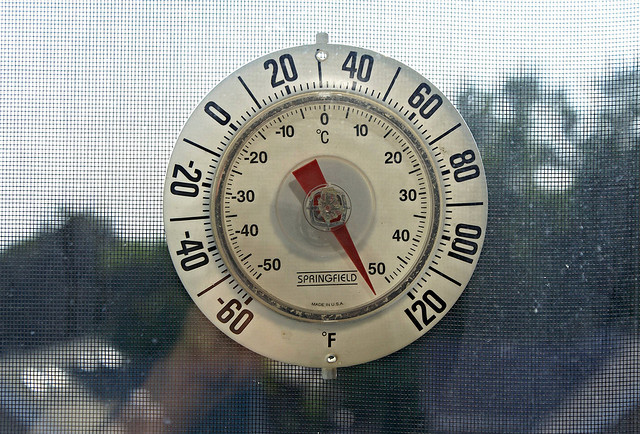Heat: The silent killer
By Kate Dries

Heat: The silent killer
By Kate Dries
–“Over the decades, the midwest has steadily gotten hotter.”
–They took a “synopic” approach to this research, meaning “that instead of looking at all weather situations together…we separate out into separate weather situations.” This is the same technology and approach that was used to develop the Chicago weather warning system.
–They looked only at those weather systems that they know that damage human health: Heat is a major one.
–“It’s not exactly the intensity of the heat that’s important; it’s the variability of the climate.”
–Even though certain places might be consistently warmer, we actually have more danger from our heat waves. “I come from Marco Island, Florida,” said Kalkstein. “Down there, the weather is the same everyday. But even though its hotter there everyday, no one dies from the heat.” This is because people in the midwest are less accustomed to dealing with extreme heat.
–The frequency of very hot and humid days a year has increased by about four days a summer over the past 60 years. And of the days that provide relief, “We have on average seven less of those today. So people are not getting the relief from these oppressive heat days that they used to get 60 years ago.”
–Cities like St. Louis and Detroit were most sensitive cases. That doesn’t mean that we should “minimize Chicago,” where nighttime warming has gotten worse; the study explains that “temperatures on hot, humid nights have increased by 1.7°F each summer, on average, while temperatures on hot, dry nights have risen by 2.6°F.”
–Why is this happening? Climate change. “This means more and more hot days and more intense heat waves over time.”
–The short term problem is addressing heat as a public heath crisis. The long term problem is not addressing climate change and the things that lead to it, like burning fossil fuels. “Heat is already the leading weather-related killer in the midwest and northeast. Heat is a silent killer. Before and after a heat wave, the city looks the same,” unlike when there’s visible national disaster, like a hurricane or a tornado.
–The study did not even include this summer. If it had, those numbers “would probably make it look even worse.”
